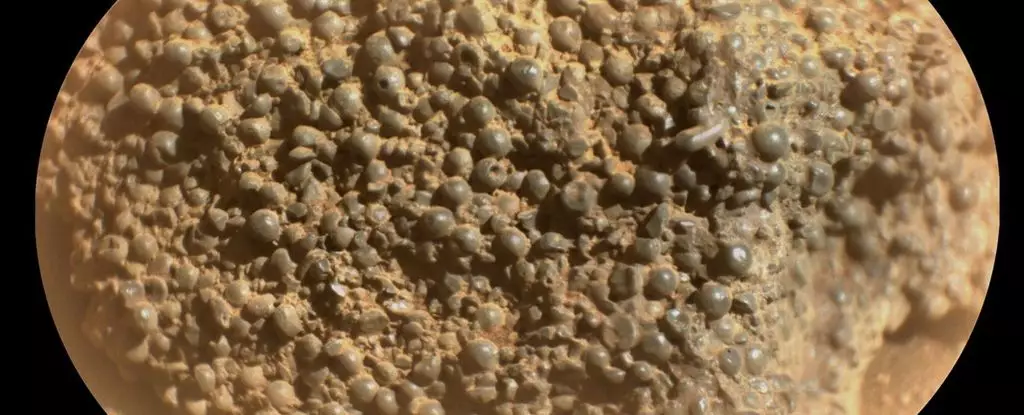Mars continues to astound scientists and space enthusiasts alike with its rich tapestry of geological phenomena. One of the latest curiosities to emerge is an astonishing rock formation named St. Pauls Bay, which was encountered by the Perseverance rover during its explorations of the Jezero Crater. Resembling an otherworldly conglomeration of tiny spheres, this peculiar formation has sparked a wave of intrigue and speculation within the scientific community. Its characterization as “shocking” is no exaggeration; the discovery has stirred a mix of excitement, bewilderment, and even frustration among researchers eager to unlock its secrets.
The Intricate Nature of St. Pauls Bay
What makes St. Pauls Bay particularly intriguing is its stark contrast to the surrounding Martian landscape, setting it apart as a unique geological anomaly. Comprised of hundreds of tiny dark gray spherules, each approximately a millimeter in diameter, this formation can easily captivate an onlooker’s imagination. On Earth, similar formations known as botryoidal structures are well understood, typically forming through crystallization processes. Yet, the mechanism behind the creation of St. Pauls Bay remains an enigmatic puzzle, with theories ranging from volcanic activity to sedimentation processes influenced by ancient Martian water.
As scientists delve deeper into planetary geology, the recognition of such peculiar formations only amplifies the allure of Mars as a site for exploration. Whether formed through watery interactions or the violent forces of nature, St. Pauls Bay stands as a reminder of the planet’s dynamic history.
Formative Theories and Mysteries
Understanding how St. Pauls Bay came to be is crucial for piecing together the broader narrative of Martian geology. While researchers compare it to known terrestrial formations, it is essential to remember that Mars may have its own set of geological rules. Previous discoveries on the planet, such as the intriguing “blueberries” found by the Opportunity rover, have indicated that water has played a pivotal role in shaping Martian landscapes. Thus, it’s challenging to apply Earth-based geological principles without considering Mars’s distinct environmental conditions.
Interestingly, the classification of St. Pauls Bay as a “float rock” complicates matters further. Its detachment from the bedrock reveals a history of transport and alteration—essentially its birthplace remains an unknown element in the investigation. This raises critical questions: What events led to its transport, and what can it tell us about the Martian environment at the time it was formed? Orbital data hint at a possible source in a nearby layer of dark rock, which only amplifies the urgency for the Perseverance rover to collect more nuanced observations.
The Drive for Exploration
The current chapter of exploration on Mars is laden with anticipation, as each discovery unveils new questions rather than providing definitive answers. The St. Pauls Bay formation, with its bewitching appearance and mysterious origins, embodies the essence of scientific inquiry itself—an ongoing quest for understanding in a world that remains just out of reach. As Perseverance gears up for further analysis, one thing is certain: this bizarre Martian landscape will likely continue to astonish and inspire awe, serving as a testament to the enduring spirit of exploration amidst the cosmos.


Leave a Reply